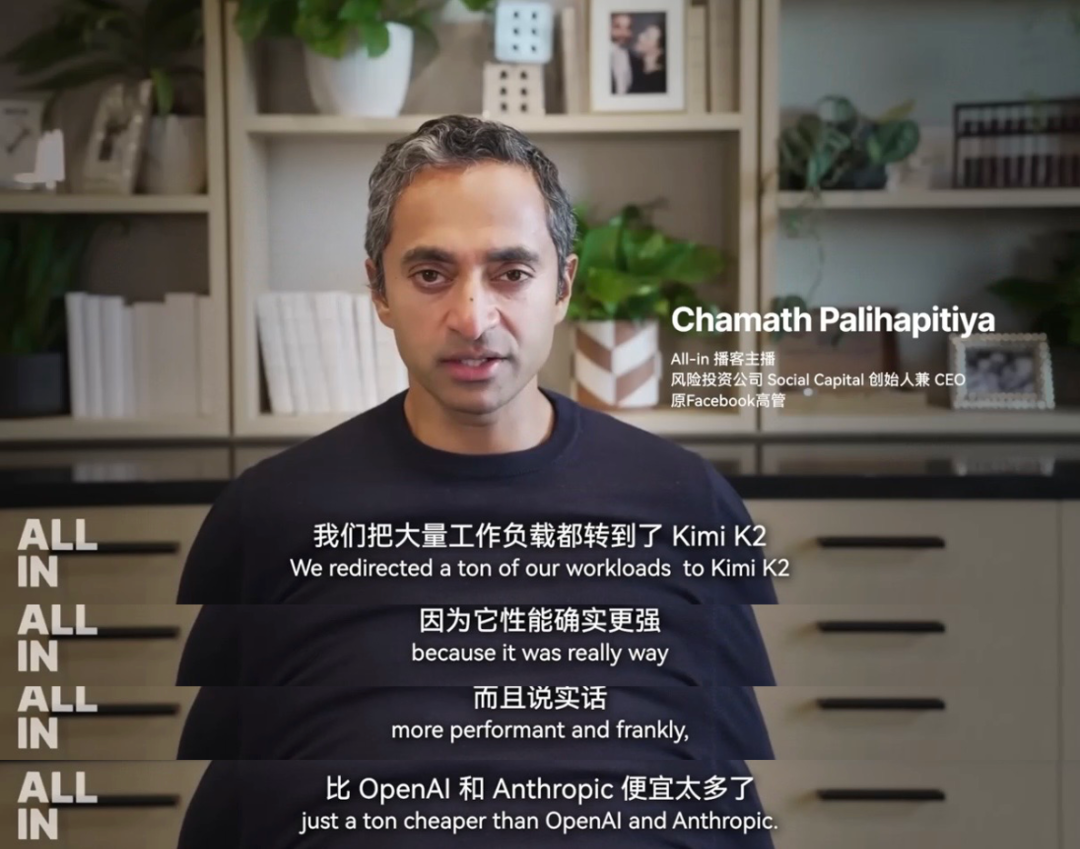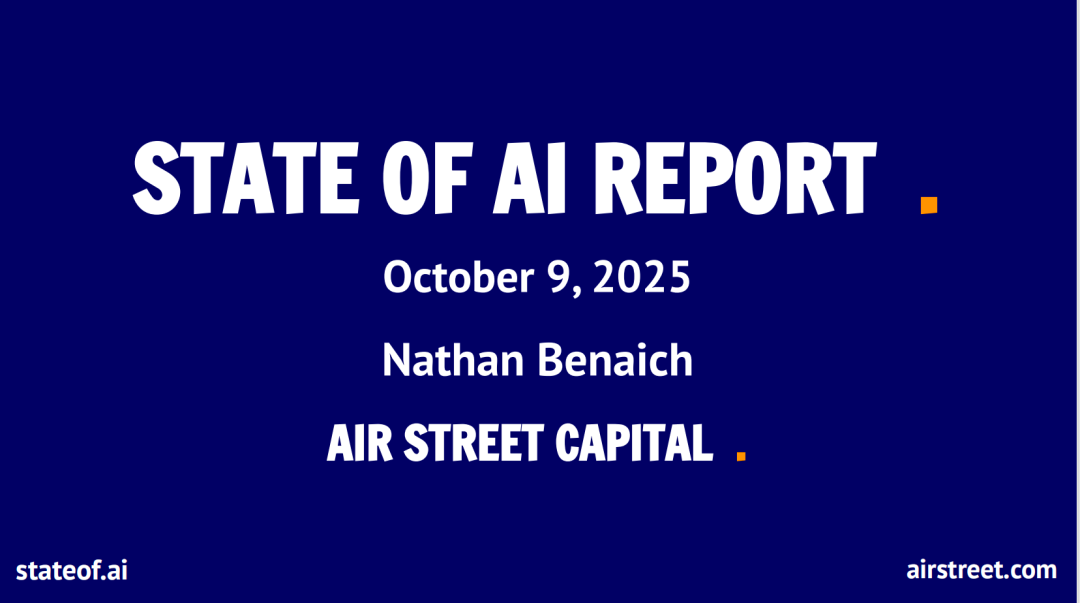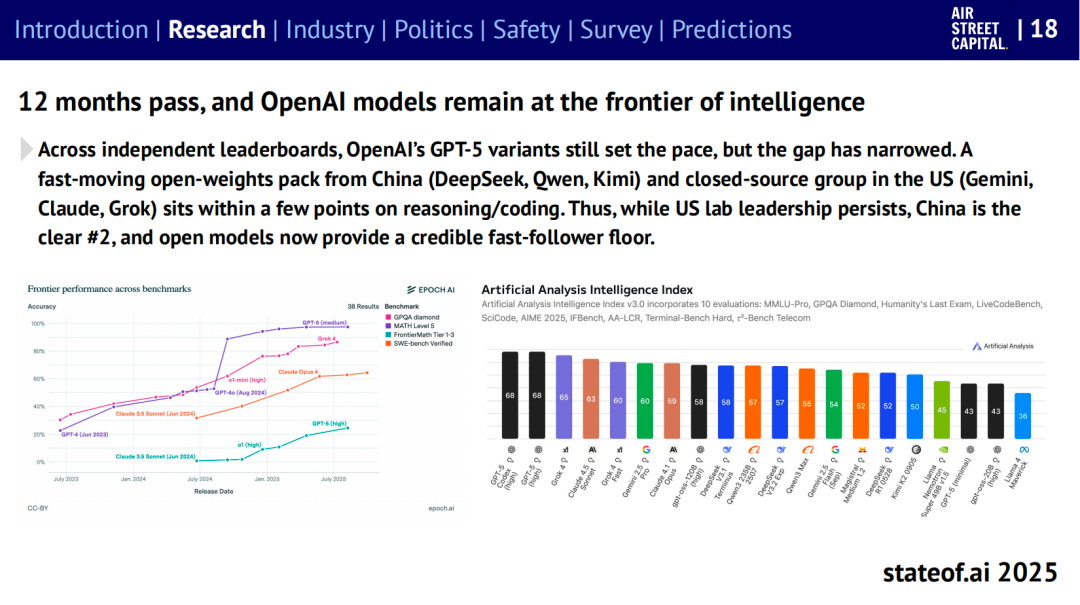
# Silicon Valley Billionaire Votes with His Feet — A Signal from the Heart of Tech
An unexpected and powerful signal is emerging right from the core of **Silicon Valley**.
On the influential *All-In* tech investment podcast, **Chamath Palihapitiya** revealed that his newly founded company — already a **Top 20 customer of Amazon’s AI hosting platform Bedrock** — has begun shifting a large portion of workloads to the Chinese AI model **Kimi K2**.
His reasoning: *“K2’s performance is truly strong, and frankly, it’s much cheaper than OpenAI and Anthropic.”*

*Source: ALL-IN Podcast*
---
## Chamath’s Influence and Legacy
Chamath is far more than a tech commentator — he’s a Silicon Valley heavyweight worth over **$10 billion**. His career highlights include:
- Growing Facebook’s user base from **45 million to 700 million** before his departure in 2011.
- Leading the creation of the viral **“People You May Know”** feature.
- Founding **Social Capital**, investing early in **Slack**, **Box**, and **SurveyMonkey**.
- Focusing investment philosophy on **hard-core technology** and **scalable business models**.
---
## Why His Choice Matters
When a pragmatic, growth-obsessed investor publicly opts for a **Chinese model** over America’s most brand-powerful AI, it signals:
- A market shift from **“cost-no-object, best-performance” exploration**
- Toward **commercial rationality**, where **brand** and **parameter count** are no longer sole value metrics.
**This is more than personal preference — it's a leading market indicator.**
---
## Developers Are Quietly Following Suit
Several highly influential platforms in the U.S. developer ecosystem have integrated **Kimi K2**, including:
- **Vercel**:
$9.3B front-end cloud development platform; integration allows millions of devs to leverage Kimi directly in modern web apps.
- **Cursor**:
AI-native code editor challenging GitHub Copilot; Kimi integration embeds it in productivity workflows.
- **Perplexity, Genspark, Youware**:
AI-native applications in search, knowledge management, and beyond; adoption shows Kimi’s reach from dev tools to user-facing apps.
> Developer adoption is arguably **stronger market validation** than any leaderboard ranking.
---
## How Did This Happen in Months?
**Answer:** One supply restriction + one rapid strategic move.
### The Trigger: Anthropic Restricts Claude API
On **September 5, 2025**, Anthropic restricted API access for Claude in certain regions.
In AI programming — a high-value niche — this created an instant market vacuum.
### Moonshot AI’s Response
On the **same day**, Moonshot AI released **Kimi K2-0905**, with:
- **Focus:** Coding and Agentic capabilities.
- **Result:**
- Scored **94%+** on Roo Code (first open-source model over 90%).
- Roo Code tests complex, real-world dev scenarios — giving Kimi global “developer job interview” credibility.
### Outcome
External pressure + decisive positioning propelled Kimi from **long-text specialist** to **global programming master**.
---

*Image source: stateof.ai*
## State of AI Report 2025 — China Says Goodbye to the Catch-Up Era
The **State of AI Report**, by Nathan Benaich and Air Street Capital, is regarded as an **annual AI barometer**. The 2025 edition states:
> “China is no longer a follower — it is setting the pace in open-source AI and large-scale commercial deployments.”
### Key Highlights from the Report:
- **Open-source leadership:**
Chinese models (**DeepSeek**, **Kimi**, **Qwen**) outperform Meta’s Llama series in multiple benchmarks.
- **Top models of 2025:**
Only three named in major advances — **OpenAI o1**, **DeepSeek-v3**, and **Kimi-K2**.

### Model Evaluations:
- **DeepSeek:**
Surpassed o1-preview in complex reasoning; strong potential in code agents and multimodal agents.
- **Kimi K2:**
Praised as *“the strongest open-source text model on the internet.”*
Topped LMSys Chatbot Arena via human blind preference testing.
---
## Two Diverging Paradigms in AI
### U.S. — “Technique to the Summit”
- Led by OpenAI, Anthropic, Google DeepMind.
- Centered in research labs.
- Focus: AGI and ultimate performance breakthroughs.
### China — “Application Co-Prosperity”
- Led by ByteDance, Baidu, Moonshot AI, DeepSeek.
- Product-oriented and ecosystem-driven.
- Focus: rapid iteration, cost-effective open models empowering a broad developer base.
---
## Kimi’s Strategic Position
Kimi’s focus is **AI programming** — not general-purpose dominance.
It aims to **balance performance, cost, and reliability** for enterprise needs.
This is a practical embodiment of **Application Co-Prosperity**:
targeting valuable niches to become specialized, economical, and globally reliable.
---
## A Dual-Track AI World Emerges
- **Technical disruption:** DeepSeek’s breakthroughs early in 2025.
- **Ecological breakthrough:** Kimi’s global commercial penetration later in the year.
> China’s AI has moved from chasing to confidently defining its own paradigm in a bipolar world.
---
## Tools Empowering This Shift — AiToEarn
Platforms like [AiToEarn官网](https://aitoearn.ai) exemplify Application Co-Prosperity:
- **Open-source AI content monetization**
- Multi-platform publishing: Douyin, Kwai, WeChat, Bilibili, Rednote, Facebook, Instagram, LinkedIn, Threads, YouTube, Pinterest, X (Twitter)
- Integrated model rankings: [AI模型排名](https://rank.aitoearn.ai)
- Bridges AI choice, workflow automation, monetization.
---
### **References:**
- [All-In Podcast Clip](https://www.youtube.com/watch?v=ddAwgZ6ietc&t=2983s)
- [State of AI Report](https://www.stateof.ai/)


![Why Luck Matters More Than Talent for Success in Life | [Jingwei Insight]](/content/images/size/w600/2025/10/img_001-103.jpg)

